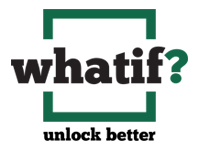
“Zero-Gravity Thinking in Leadership”
Resistance from within is common. It’s about framing the changes not as a disruption but as an evolution toward a more sustainable, relevant, and competitive business in the next few years and beyond.
In this week’s Whatif? Wednesday Thought Letter, let’s build on how zero-gravity thinking can revolutionize even the most traditional business environments. Imagine a new leader stepping into a legacy company; how might they implement transformative changes?
Understanding the Traditional Landscape
Traditional businesses typically operate within well-established norms that have been tried and tested over decades. Consequently, these companies might resist change, focusing on “what works” instead of “what could work better.” As a new leader in such a setting, the challenge is moving beyond incremental improvements to envision a fundamentally different way of operating.
Embracing Zero-Gravity Thinking
Zero-gravity thinking for a new leader means seeing beyond the immediate confines of the current business model. It involves challenging the very assumptions that the business has stood upon and daring to reimagine what’s possible. This could be transforming product lines, rethinking customer interaction, or overhauling operational processes.
Case Study I: Revamping a Retail Chain
Consider Christine, who stepped into a traditional brick-and-mortar retail chain where all decisions were made top-down. With declining in-store foot traffic and sales and anemic e-commerce sales, Christine employed zero-gravity thinking to radically shift how the business engaged with customers, employees, and suppliers, effectively turning the decision process upside down. She introduced working groups comprised of these stakeholders, revamping the in-store look, customer engagement, and the online shopping experience, resulting in improvements in all key performance metrics.
Implementing Change
Implementing such visionary changes requires a clear strategy and the ability to persuade stakeholders of its benefits. Recognizing the traditional nature of her company’s culture, Christine began by piloting her ideas in select locations, demonstrating their effectiveness through tangible results. She used the data to build her case, aligning her initiatives with the company’s long-term financial goals, customer satisfaction metrics, and brand aspiration.
Case Study II: B2B Consulting Firm Transformation
Michael is a new managing director at a traditional B2B boutique consulting firm that delivers services through in-person engagements. Seeing the growing demand for flexible, digital-first delivery, he introduces a hybrid consulting model that combines virtual workshops, AI-driven analytics, and remote consulting services. This shift expands the firm’s market reach and increases its appeal to a younger, more tech-savvy clientele, significantly boosting client engagement, satisfaction, and growth.
Navigating Challenges
The path of innovation is fraught with challenges, especially in traditional settings. Resistance from within—from managers and employees accustomed to conventional thinking or from a board or ownership that fears the risks of drastic changes—is common. Effective communication becomes crucial. It’s about framing the changes not as a disruption but as an evolution toward a more sustainable, relevant, and competitive business in the next few years and beyond.
Conclusion
For new leaders in traditional businesses, zero-gravity thinking offers a unique opportunity to redefine and revitalize established companies. It’s about courage, vision, and the strategic execution of ideas that can turn conventional operations into innovative powerhouses. CEOs must champion leaders like Christine and Michael, who transform challenges into opportunities for growth and innovation.
Next week’s Thought Letter will discuss how we can apply zero-gravity thinking to catalyze impactful team outcomes.
Stay curious.


Leave a Reply